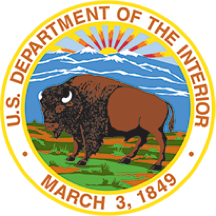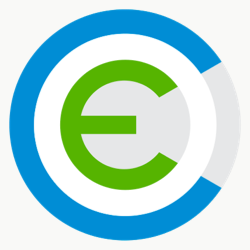What Agile Looks Like at the Office of Natural Resources Revenue
Agile at the Office of Natural Resources Revenue (ONRR) started with 18F. They reflect on where they are today, five years later.— via Office of Natural Resources Revenue

Agile at the Office of Natural Resources Revenue (ONRR) started with 18F. They reflect on where they are today, five years later.— via Office of Natural Resources Revenue

Help Us Improve Digital Forms—People in the U.S. spend over 10 billion hours each year completing government forms. The Office of Evaluation Sciences is working to reduce this burden and make digital forms easier and more accessible. You can help by filling out a short typical form. It will take less than five minutes!— via General Services Administration

Content Design for beta.ADA.gov: Writing for Action and Flexibility—18F worked with a team at the Department of Justice to redesign ADA.gov. They helped them launch beta.ada.gov, and designed new content for some of the most sought-after ADA topics.— via 18F

This feature on Agata Ciesielski, a fellow in the White House Presidential Innovation Fellowship (PIF) Program, highlights the opportunities provided by the program to work on big impact inter-agency problems, such as elevating artificial intelligence solutions.
Penetration Test Guidance Updates—These updates were made to address the ever-changing cybersecurity landscape. Revisions include updated guidance around existing and new threats as well as addressing attack vectors so they’re in alignment with current best practices. Learn about the four initiatives included in the revision process, and download the new June 2022 PDF.— via FedRAMP

Announcing the CX Maturity Model—A recent executive order on improving customer experience and service delivery holds 17 agencies accountable for 36 specific commitments, but it is a call to action for the entire federal government. The Customer Experience Center of Excellence (CX CoE) has created a Maturity Model, a framework to help organizations transform their federal service delivery. It is designed to provide organizations with a deeper understanding of how to measure their maturity level, and tactics to get to the next level. Although the CX Maturity Model does not represent or constitute official guidance, it can help you take your organization’s CX Maturity to the next level. Tailor the model to meet your agency’s specific needs.— via The Centers of Excellence

Modern digital services require a close connection between federal agencies and contractors, as well as customers and other stakeholders. Use these five practical tips to attract and empower contractors who value diversity, equity, inclusion, and accessibility.
C-SCRM Acquisition Community of Practice (ACoP) Interact Site—Since the launch of the Cybersecurity Supply Chain Risk Management (C-SCRM) Acquisition Community of Practice (ACoP), GSA and the Cybersecurity and Infrastructure Security Agency (CISA) have been co-leading an effort to broaden the level of awareness and develop agency maturity in the areas of acquisitions, supply chain risk management, and cybersecurity across the federal government for information communication technology and services (ICTS). To increase C-SCRM awareness and adoption government-wide, the C-SCRM ACoP launched an online collaborative space for the federal government’s IT community and industry to share best practices, ideas, guidance, tools, and expertise needed to implement C-SCRM requirements. Working together as a community and sharing information will help us improve our cybersecurity posture across all levels of government.— via General Services Administration

What is Customer Experience?—With the new Executive Order on Transforming Federal Customer Experience and Service Delivery to Rebuild Trust in Government (Executive Order 14058), customer experience (CX) has become a buzzword in the federal government. Let’s take a look at what it is.— via Office of Natural Resources Revenue

Usability testing is a way to learn how easy or difficult it is for people to use something by observing them actually using it. The resources provided in this kit can help you systematize the process, produce reliable findings, and generally expand your ability to test service materials (i.e., paper and digital forms, mobile applications, web pages, etc.) thoroughly with real users — before you launch them out into the world.
Starting with a pool of nearly 200 ideas, 10x is excited to announce new projects to be funded at the Phase One Investigation level for FY22. Here’s how we got there, some observations made, and next steps.
Announcing Data Governance Charter Templates—As a part of our Resources and Advisory Support collection, the Data and Analytics (DA) team in the Centers of Excellence (CoE) has released three charter templates that can help federal agencies set up data governance groups and an Office of the Chief Data Officer. We developed these charter templates based on our experiences working with chief data officers (CDOs) and data practitioners across the federal government. These charters are designed to help federal government agencies set up data governance bodies to better use agency data securely and strategically. Although the charter templates don’t represent or constitute official guidance, they’ll help jump start your effort to build data governance structures within your agency. Tailor them to meet your agency’s specific needs.— via The Centers of Excellence

Sunsetting Go.USA.gov: Frequently Asked Questions—For more than a dozen years, government employees have used the Go.USA.gov URL shortening service to turn long government and military URLs into more manageable short URLs. On September 18, 2022, the U.S. General Services Administration (GSA) will sunset Go.USA.gov. If you’re a Go.USA.gov user, these answers to common questions can help you know what to do to prepare for the end of the service.— via USA.gov

This case study describes how two civic designers at different agencies embed equity in civic design to transform federal customer experience.
The Technology Modernization Fund (TMF) is working to transform the way the government uses technology to deliver for the American public in an equitable, secure and user-friendly way. It strategically invests in priority IT modernization projects that are aligned with the fast pace of changing technology and agency needs. Here are a few examples of how the TMF has invested in multiple projects that are helping many agencies deliver what people need when they need.
This question and answer session for our webinar, Language Connections: Tips to Create, Maintain, and Present Non-English Digital Content, can help you improve access to your multilingual digital content.
Digital.gov
An official website of the U.S. General Services Administration